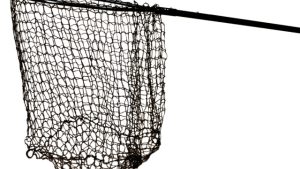
12 Essential Tips for Successful Web Scraping

Web scraping has become an indispensable tool in today’s data-driven world. With the vast amount of information available on the internet, web scraping allows us to extract valuable insights and utilize web data as a powerful resource for decision making. At "Scraping Pros," we specialize in transforming web data into a business advantage, helping you harness its potential to fuel your success. In this article, we will share with you 12 essential tips for successful web scraping, ensuring that you make the most out of this valuable technique. So let’s dive in and discover how you can effectively navigate the world of web scraping!
Choosing the Right Web Scraping Tool
When it comes to web scraping, selecting the right tool is crucial in achieving successful outcomes. With a multitude of options available, it’s essential to consider your specific requirements before making a decision. Here are some factors to keep in mind when choosing the ideal web scraping tool for your needs.
Firstly, consider the complexity of the websites you plan to scrape. Some tools are better suited for simple and straightforward websites, while others offer more advanced capabilities for handling complex structures and dynamic content. Assessing the nature of your target websites will help you determine which tool can effectively handle the data extraction process.
Another important factor to consider is the scalability of the tool. If you anticipate scraping a large amount of data or multiple websites simultaneously, it’s essential to choose a tool that can handle the volume and scale efficiently. Look for features such as distributed scraping or parallel processing capabilities to ensure optimal performance and speed.
Lastly, consider the level of support and documentation provided by the tool’s developers. Web scraping can be a complex task, and having access to comprehensive documentation and a responsive support team can save you valuable time and effort. Look for tools that offer clear documentation, tutorials, and an active community forum where you can seek help and guidance when needed.
By carefully considering these factors and aligning them with your specific requirements, you’ll be able to choose the right web scraping tool that best suits your needs. Remember, the tool you select plays a crucial role in the success of your web scraping endeavors, so take the time to research and evaluate your options thoroughly.
Understanding Web Page Structure
Web Scraping Services
Web page structure plays a crucial role in successful web scraping. By understanding the structure of a web page, you can navigate through its elements and extract the desired data efficiently. Here are some key aspects to consider:
HTML Tags: Web pages are built using HTML tags, which define the structure and layout of the content. Each tag serves a specific purpose, such as indicating headings, paragraphs, images, links, and more. By identifying and targeting the relevant tags, you can extract the required information systematically.
Nested Elements: Elements within a web page can be nested inside one another, creating a hierarchical structure. It’s important to take note of this nesting when scraping data, as it affects how you access and extract the desired information. Understanding the relationship between different elements will help you navigate through the page effectively.
Class and ID Attributes: HTML elements often have class and ID attributes assigned to them. These attributes help identify specific elements on a web page. By inspecting the HTML source code, you can identify the unique classes or IDs associated with the data you want to scrape. Utilizing these attributes in your scraping code allows you to precisely target the desired content.
Remember, a thorough understanding of web page structure is essential for successful web scraping. By familiarizing yourself with HTML tags, nested elements, and class/ID attributes, you’ll be better equipped to extract the web data you need efficiently and accurately.
Respecting Website Terms of Service
When engaging in web scraping activities, it is crucial to respect the terms of service put forth by the websites you are scraping. By doing so, you not only abide by ethical standards but also maintain a positive and legal approach to accessing web data. Here are a few tips to ensure you are in compliance with website terms of service:
Review the Terms of Service: Take the time to carefully read and understand the terms of service of the website you intend to scrape. Each website may have specific guidelines and restrictions that you need to be aware of. Familiarize yourself with these terms to avoid any potential violations.
Observe Crawl Rate Limitations: Most websites have recommended crawl rates or limitations in their terms of service. These limitations are designed to prevent server overload and ensure fair usage. Stick to the recommended crawl rate or adjust your scraping accordingly to avoid disrupting the website’s functionality.
Respect Content Licensing and Intellectual Property: While scraping web data, it’s important to acknowledge and respect content licensing and intellectual property rights. Ensure that the data you scrape is used in a legal and appropriate manner, giving credit to the original sources when required.
Remember, web scraping is a powerful tool, but it should always be used responsibly. By respecting website terms of service, you contribute to a fair and sustainable web ecosystem while also safeguarding your own scraping endeavors.

